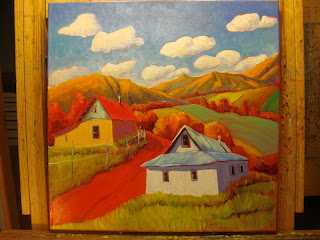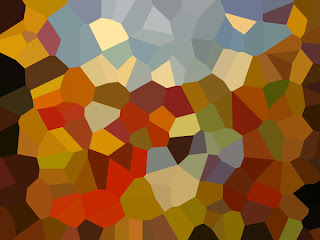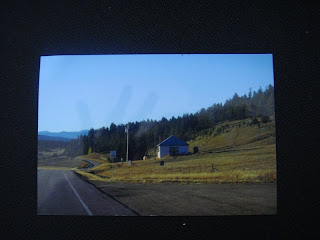Giclée
From Wikipedia, the free encyclopedia
Giclée (pronounced /ʒiːˈkleɪ/ "zhee-clay" or /dʒiːˈkleɪ, from French [ʒiˈkle]) is a neologism for the process of making fine art prints from a digital source using ink-jet printing. The word "giclée" is derived from the French language word "le gicleur" meaning "nozzle", or more specifically "gicler" meaning "to squirt, spurt, or spray". It was coined in 1991 by Jack Duganne, a printmaker working in the field, to represent any inkjet-based digital print used as fine art. The intent of that name was to distinguish commonly known industrial "Iris proofs" from the type of fine art prints artists were producing on those same types of printers. The name was originally applied to fine art prints created on Iris printers in a process invented in the early 1990s but has since come to mean any high quality ink-jet print and is often used in galleries and print shops to denote such prints.
Giclee is just a fancy word for an ink-jet art print. Just a copy, a reproduction. And I am opposed to the use of the term to "trick" novice art buyers into thinking they are buying something of real value. Because generally they are not. I've never done prints of my work. Although there are a lot of people out there who tell me I should. I think it undervalues the original work an artist puts out. Plus, I want my buyers to know that if they purchase one of my pieces, no one else is going to have that same image hanging in their home.
After college, I bought some prints to decorate my apartment. I sure wish the artists and galleries I bought from had suggested that, rather than purchase a large print, that I might consider a small original. Because now a few of those posters hang in my laundry room and the rest are long gone. And I still don't have enough room to hang all the art I would like!
At art shows, I have seen artists with huge bins of prints. And then I see them spend all this time helping people try to pick which print to buy, all the while ignoring people who are actually looking at the originals. I think it is lost sales. Then I see artists who have been doing prints, coffee mugs, mouse pads, tshirts, etc. for years. Their market has been flooded. Patrons see the artist and exclaim, "Oh, I have a poster of yours!" They are not even considering the acquisition of an original.
Granted, there are people who don't have the money to spend on an original piece. But, I am always happy to work out a payment schedule and I try to offer small pieces so if someone likes my work and can't afford (either monetarily or space-wise) a big piece, they can acquire a smaller one. Or, if necessary, a postcard or business card with an image of my work on it (I do let the purchaser of the original know if I have used the image on one of my marketing items before the sale)--to tide them over until the time is right.
So, I'm going to stick to my principles and not create prints of my work. Maybe this post will help explain why.

 My thanks to Bonnie Harmston for pointing out the original post about Van Gogh's colors in pie chart form and to Stephen Dickerson for showing me something similar in photoshop with pixelated filters. Very fun way to see what colors I use! (Of course the edges of this are actually the colors of my easel!)
My thanks to Bonnie Harmston for pointing out the original post about Van Gogh's colors in pie chart form and to Stephen Dickerson for showing me something similar in photoshop with pixelated filters. Very fun way to see what colors I use! (Of course the edges of this are actually the colors of my easel!)















